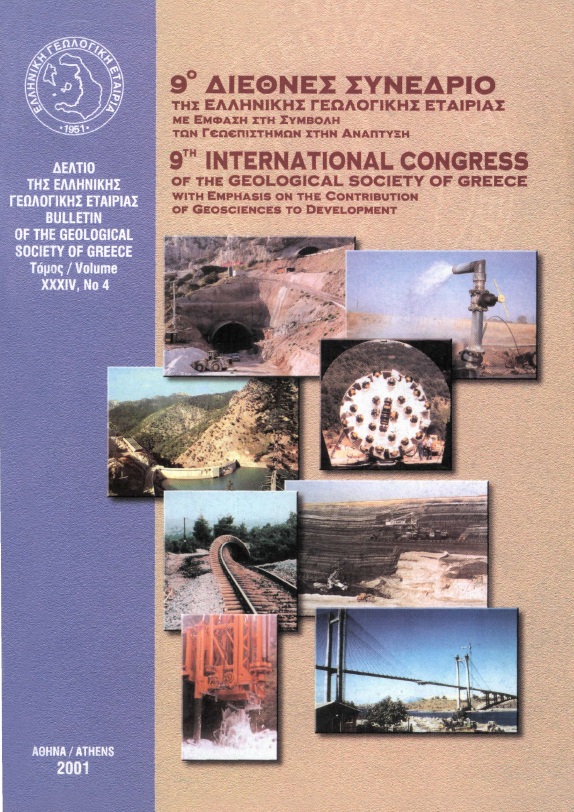2-D GEOELECTRICAL SURVEY FOR THE PRELIMINARY ROUTE OF THE NATURAL GAS PIPELINE INSTALLATION AT ALISTRATI CAVES, N. GREECE
Περίληψη
An extensive 2-D geoelectrical survey was carried out at the Alistrati caves, prefecture of Serres, Ν. Greece, as part of a preliminary route survey for the planned natural gas pipeline that was about to cross these regions of Northern Greece. Geophysics can play a significant role in this procedure. Synthetic modeling and inversion examples presented in this work support the above claim. The dipole-dipole array was used with inter-electrode spacing of 5m and maximum dipole separation of n equal to 8 dipole spacing. Two groups of personnel, including geophysicists and technicians, worked for one month to realize this survey. The number of measurements is really enormous for such type of research. A total of 7616 measurements (952 electrode points) were obtained. The area of investigation was chosen on the basis of the local geological conditions, which appeared to favor the existence of void structures. The survey line had a length of approximately 5 km. The 2-D geoelectrical survey proved to be an effective tool for delineating the subsurface lithology and structure of the surveyed area. Most importantly, the technique proved successful in locating highly karstified areas and can be used to aid void mapping as well as to provide useful information about their general setting.
Λεπτομέρειες άρθρου
- Πώς να δημιουργήσετε Αναφορές
-
Atzemoglou, A., Tsourlos, P., & Vasiliadis, C. (2004). 2-D GEOELECTRICAL SURVEY FOR THE PRELIMINARY ROUTE OF THE NATURAL GAS PIPELINE INSTALLATION AT ALISTRATI CAVES, N. GREECE. Δελτίο της Ελληνικής Γεωλογικής Εταιρείας, 36(3), 1262–1268. https://doi.org/10.12681/bgsg.16469
- Ενότητα
- Γεωφυσική

Αυτή η εργασία είναι αδειοδοτημένη υπό το CC Αναφορά Δημιουργού – Μη Εμπορική Χρήση 4.0.
Οι συγγραφείς θα πρέπει να είναι σύμφωνοι με τα παρακάτω: Οι συγγραφείς των άρθρων που δημοσιεύονται στο περιοδικό διατηρούν τα δικαιώματα πνευματικής ιδιοκτησίας επί των άρθρων τους, δίνοντας στο περιοδικό το δικαίωμα της πρώτης δημοσίευσης. Άρθρα που δημοσιεύονται στο περιοδικό διατίθενται με άδεια Creative Commons 4.0 Non Commercial και σύμφωνα με την οποία μπορούν να χρησιμοποιούνται ελεύθερα, με αναφορά στο/στη συγγραφέα και στην πρώτη δημοσίευση για μη κερδοσκοπικούς σκοπούς. Οι συγγραφείς μπορούν να: Μοιραστούν — αντιγράψουν και αναδιανέμουν το υλικό με κάθε μέσο και τρόπο, Προσαρμόσουν — αναμείξουν, τροποποιήσουν και δημιουργήσουν πάνω στο υλικό.











